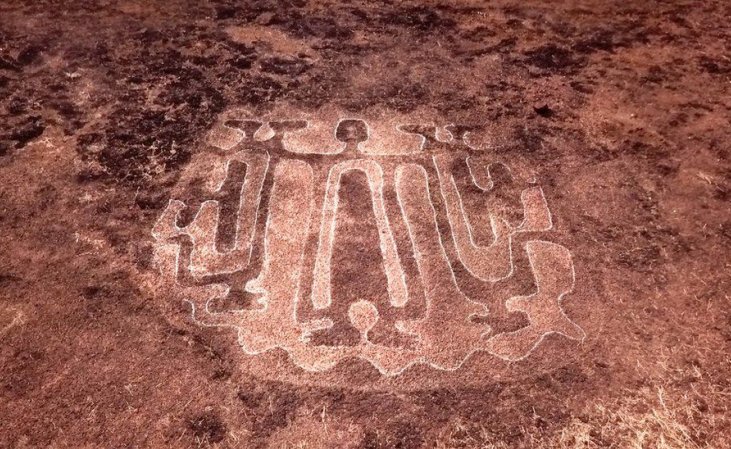Conny Waters - AncientPages.com - A new set of petroglyphs may offer evidence of a lost advanced civilization that existed thousands of years ago.
The rock art was found in India's western state of Maharashtra. Archaeologists say it’s unknown who created these prehistoric rock carvings depicting animals, humans, and geometric designs.
Credit: BBC - Marathi
Scientists are also puzzled by how the artists were able to produce recognizable carvings of non-native species, like rhinos and hippopotamuses, that usually reside in Africa.
Most of the rock carvings were made on rocky, flat hilltops and their existence has remained unnoticed for thousands of years.
According to BBC, most of the rock carvings “were hidden beneath layers of soil and mud. But a few were in the open - these were considered holy and worshipped by locals in some areas.”
Credit: BBC - Marathi
It should also be added that “the credit for their discovery goes to a group of explorers led by Sudhir Risbood and Manoj Marathe, who began searching for the images in earnest after observing a few in the area. Many were found in village temples and played a part in local folklore.”
By comparing the petroglyphs with other similar rock carvings found in different parts of the world, scientists now believe that “they were created in prehistoric times and are possibly among the oldest ever discovered.”
"Our first deduction from examining these petroglyphs is that they were created around 10,000 BC," the director of the Maharashtra state archaeology department, Tejas Garge, told the BBC.
Credit: BBC - Marathi
The civilization responsible for the creation of these petroglyphs remains unknown, but scientists speculate the images were made by “a hunter-gatherer community which was not familiar with agriculture.”
"We have not found any pictures of farming activities. But the images depict hunted animals and there's detailing of animal forms. So this man knew about animals and sea creatures. That indicates he was dependent on hunting for food," Garge said.
He also added that “most of the petroglyphs show familiar animals. There are images of sharks and whales as well as amphibians like turtles.”
Credit: BBC - Marathi
But the truly interesting aspect of these petroglyphs is that they depict animals like hippos and rhinoceroses which aren't found in this part of India. Did the people who created them migrate to India from Africa? Or were these animals once found in India?
Written by Conny Waters - AncientPages.com Staff Writer








